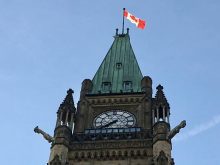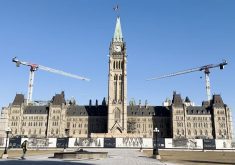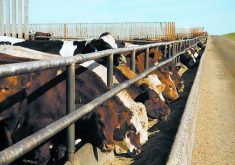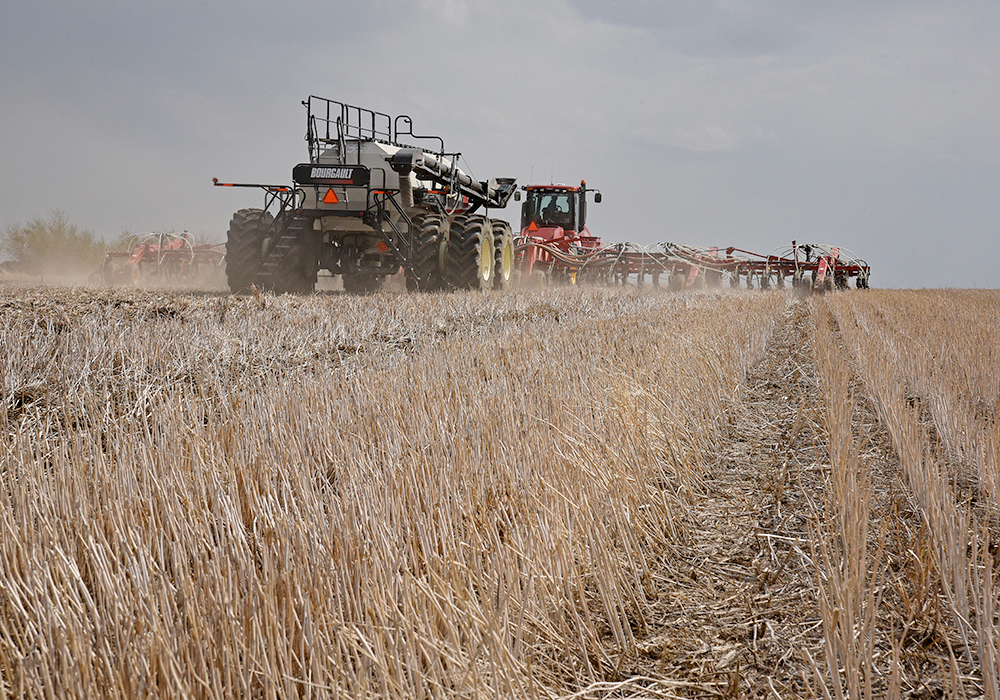Canadians who were hoping for a repeat of the 2017 federal budget that doubled down on the economic growth potential of the agriculture sector will be sorely disappointed.
Finance Minister Bill Morneau unveiled Ottawa’s latest budget roadmap Tuesday, highlights of which include a major overhaul of how this country conducts scientific research and a target focus on engaging women in the workforce.
The Liberal government is investing $6.6 billion in science and innovation funding — including $2.8 billion aimed at “re-imagining” the National Research Council. Federal scientists from various departments are also being encouraged to collaborate with each other on areas including climate change, ocean health and human health.
Read Also

Farming Smarter receives financial boost from Alberta government for potato research
Farming Smarter near Lethbridge got a boost to its research equipment, thanks to the Alberta government’s increase in funding for research associations.
Ottawa has pledged $1.2 billion over five years for this country’s granting councils, along with promises for new investments in laboratory equipment and other tools.
Meanwhile, $210 million has been promised over five years, starting this year, for the Canada Research Chairs Program, while $572.5 million has been earmarked for big data research and researcher access over the same time frame.
While agriculture itself earned very little mention in the 2018 budget (it didn’t even get its own section in the table of contents), there are a few items of note.
The federal finance minister unveiled a new plan to tax passive income. The changes are the result of months of public consultations launched last October in the midst of a firestorm of public and political backlash around the Liberals proposed changes to how Canadian controlled private corporations are taxed.
Passive income includes money earned from rented out farmland. Ottawa’s initial proposal was heavily criticized by farm groups who called it unworkable.
The new structure unveiled Tuesday sees the Department of Finance set a threshold of $50,000 on passive income to allow for some personal savings, like retirement, sick leave or parental leave.
Meanwhile, private corporations who earn more than $50,000 in passive income up to a maximum of $150,000 will see their ability to claim the small business tax rate of 15 percent phased out at a rate of $5 for every dollar of investment income over $50,000.
On the trade front, Global Affairs Canada is getting $75 million over five years to improve Canada’s trade and diplomatic presence in China and Asia as Ottawa works to diversify this country’s trade portfolio. An additional $11.8 million has been earmarked per year thereafter.
No details around possible contingency plans if ongoing NAFTA trade talks fail were included in Budget 2018. Tuesday’s budget did reiterate the trade pact’s importance to the Canadian economy.
Despite concessions being made under the Comprehensive and Progressive Trans Pacific Partnership, there is also no compensation package for Canada’s supply management sector.
Meanwhile, the Liberal government has promised $4.3 million over five years to reopen the shuttered prison farms at the Joyceville and Collins Bay penitentiaries, starting in 2018. The farms will be run by CORCAN, one of Correctional Services of Canada’s rehabilitation arms.
The farms, which were recognized around the world for their successful programming, were closed by the Harper government as a cost-saving measure — despite significant public backlash. Public interest in the file was high particularly in the Kingston area where the institutions are located.
Ottawa is also looking to engage more women in the agriculture sector by creating a new lending project through Farm Credit Canada. Details of how that project will operate are still pending.
Last but certainly not least, there’s also $100 million over five years for rural broadband with a special focus on projects that involve the use of low Earth orbit satellites.
Those satellites, the federal government said, have the “potential to provide Canadians living in rural and remote areas with significantly improved access to Internet and wireless services at affordable prices.”
Kelsey Johnson is a reporter with www.ipolitics.ca

















